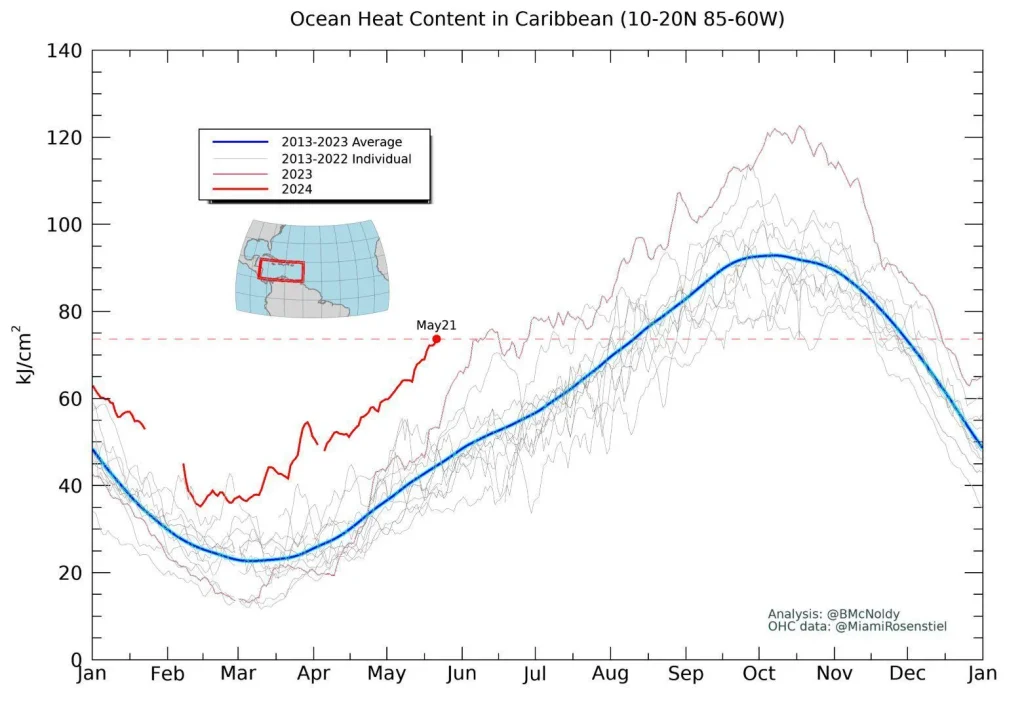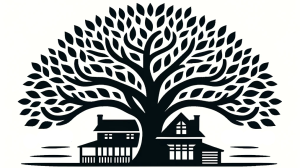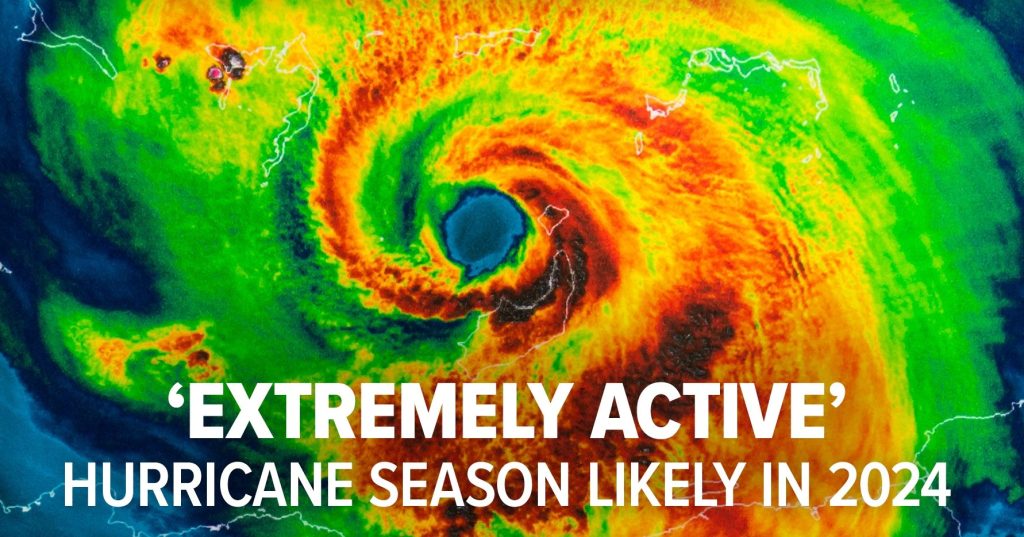Hurricane Preparedness
As the 2024 hurricane season looms, anticipation turns to anxiety for many living in the path of potential storms. According to NOAA’s 2024 Atlantic Hurricane Season Outlook, we are bracing for a particularly active season. The forecast predicts 17-25 named storms, 8-13 hurricanes, and 4-7 major hurricanes, peaking between August and October. With such formidable projections, ensuring the safety of our homes and communities takes on heightened urgency. Often overlooked, yet crucial, is the role of tree care in hurricane preparedness. A proactive approach to arboriculture can mitigate damage, preserve property, and protect lives.
The Forecast
NOAA’s 2024 outlook underscores the need for vigilance. The likelihood of an above-normal season is 85%, far exceeding the 1991-2020 averages. This forecast, a product of meticulous climate modeling and historical analysis, emphasizes the importance of preemptive measures. Trees, with their sprawling branches and towering heights, can become both protectors and hazards in the face of a hurricane. Understanding how to fortify them against severe weather is essential.
Why Tree Care Matters
Trees provide beauty, shade, and ecological benefits. However, during a hurricane, they can transform into dangerous projectiles or even collapse entirely. Proper tree maintenance not only preserves their health but also reduces the risk they pose during storms. As we prepare for an active hurricane season, the significance of preventive tree care cannot be overstated.
Regular Inspections: The First Line of Defense
Identify Weaknesses: Diseased, decaying, or structurally unsound branches are vulnerabilities that can compromise tree health and safety. Inspect trees regularly to spot hidden threats like infections, decaying branches, or poor attachment. Addressing these issues promptly can prevent accidents, property damage, and injuries. Stay proactive to ensure tree longevity and a safe environment.
Professional Assessment: Hiring an arborist is crucial for evaluating tree health and stability. They assess overall health, structure, and root system, identifying issues and recommending solutions. Arborists detect disease, pests, and weaknesses, ensuring healthy roots and soil anchorage. Their evaluations prevent hazards and extend tree life, offering advice on care, pruning, watering, and fertilization. Investing in an arborist ensures informed decisions and long-term tree health and hurricane preparedness.
Strategic Pruning: Balancing Health and Safety
Remove Dead or Weak Branches: Pruning dead or weak branches is essential for tree health and safety. These branches are likely to break off in storms, posing risks to people and property. Regular pruning prevents accidents, pest infestations, and diseases, while improving tree appearance. It’s a simple way to maintain tree longevity, health, and stability during hurricane season.
Thin the Canopy: Thinning a tree’s canopy is crucial for its health and storm resilience. Removing branches to create space improves air circulation, reduces uprooting risks, and prevents diseases. Avoid excessive pruning to prevent stress and consult an arborist for guidance. Focus on removing dead or damaged branches first to enhance structural integrity. Proper thinning promotes healthy growth and wind resistance. Balance air circulation and natural form for long-term health and hurricane preparedness.
Ensuring Proper Tree Health: A Robust Foundation
Fertilization: A healthy tree is a resilient tree. Appropriate fertilization supports overall vigor, making trees more capable of withstanding storm conditions. Consult with an arborist to determine the best fertilization plan for your trees based on species, age, and soil conditions.
Watering: Consistent watering, particularly during dry periods, maintains flexibility and strength, crucial attributes during high winds. Deep, infrequent watering encourages deep root growth, enhancing stability. Avoid overwatering, which can weaken roots and increase the risk of uprooting during a hurricane.
Removing Hazardous Trees: Making the Tough Call
Professional Removal: Some trees, due to disease or structural issues, pose too great a risk to retain. Professional removal of such trees, especially those near homes or power lines, is a prudent step in hurricane preparation. Qualified arborists have the expertise and equipment to safely remove hazardous trees, minimizing the risk of damage during a storm.
Long-Term Strategies for Resilience
Planting Wind-Resistant Species: When selecting new trees for your property, opt for species known for their durability in storms. Live oaks, for example, have a proven track record of weathering hurricanes with minimal damage. Consult with local nurseries or arborists to choose species well-suited to your climate and soil conditions.
Proper Planting Techniques: Trees planted with ample space for root growth develop deeper, more stable roots, essential for withstanding high winds. Follow proper planting techniques, including appropriate hole size, soil amendments, and staking, to encourage strong root development. A well-established root system is key to a tree’s hurricane resilience.
Continuous Monitoring: Vigilance and Adaptation
Regular Check-Ups: Post-storm inspections and continuous monitoring are crucial. Trees can develop new issues after surviving a storm, and ongoing care ensures their long-term health and safety. Schedule regular check-ups with an arborist to identify and address any concerns promptly. Monitoring allows for timely interventions to maintain tree health and hurricane readiness.
Post-Storm Tree Care: Recovery and Restoration
Assessing Damage Safely: After a storm, assess your trees for damage. Look for hanging branches, splits, or leaning trunks. However, avoid handling significant damage yourself. Professional arborists are equipped to manage complex or hazardous situations safely. Contact a qualified arborist for a thorough post-storm assessment and recommendations for recovery.
Emergency Pruning: Promptly remove hanging branches or other immediate threats to prevent further damage or injury. Proper pruning techniques are essential to avoid additional stress on the tree. An arborist can guide you through the emergency pruning process, ensuring the tree’s long-term health and stability.
Supporting Tree Recovery: Trees stressed by storms need additional support. Watering, mulching, and appropriate fertilization can aid in their recovery, restoring their health and resilience. Follow the advice of a qualified arborist to create a post-storm care plan tailored to your trees’ specific needs. With proper care, most trees can recover and continue to provide benefits for years to come.
As the 2024 hurricane season approaches, the importance of preventive tree care becomes increasingly clear. By inspecting, pruning, and maintaining our trees, we can significantly reduce the risks posed by severe weather. A proactive approach to arboriculture not only protects our homes and communities but also preserves the natural beauty and ecological benefits trees provide. In a season where every preparation counts, ensuring the health and stability of our trees is a vital step in safeguarding our future.



Leave a Reply